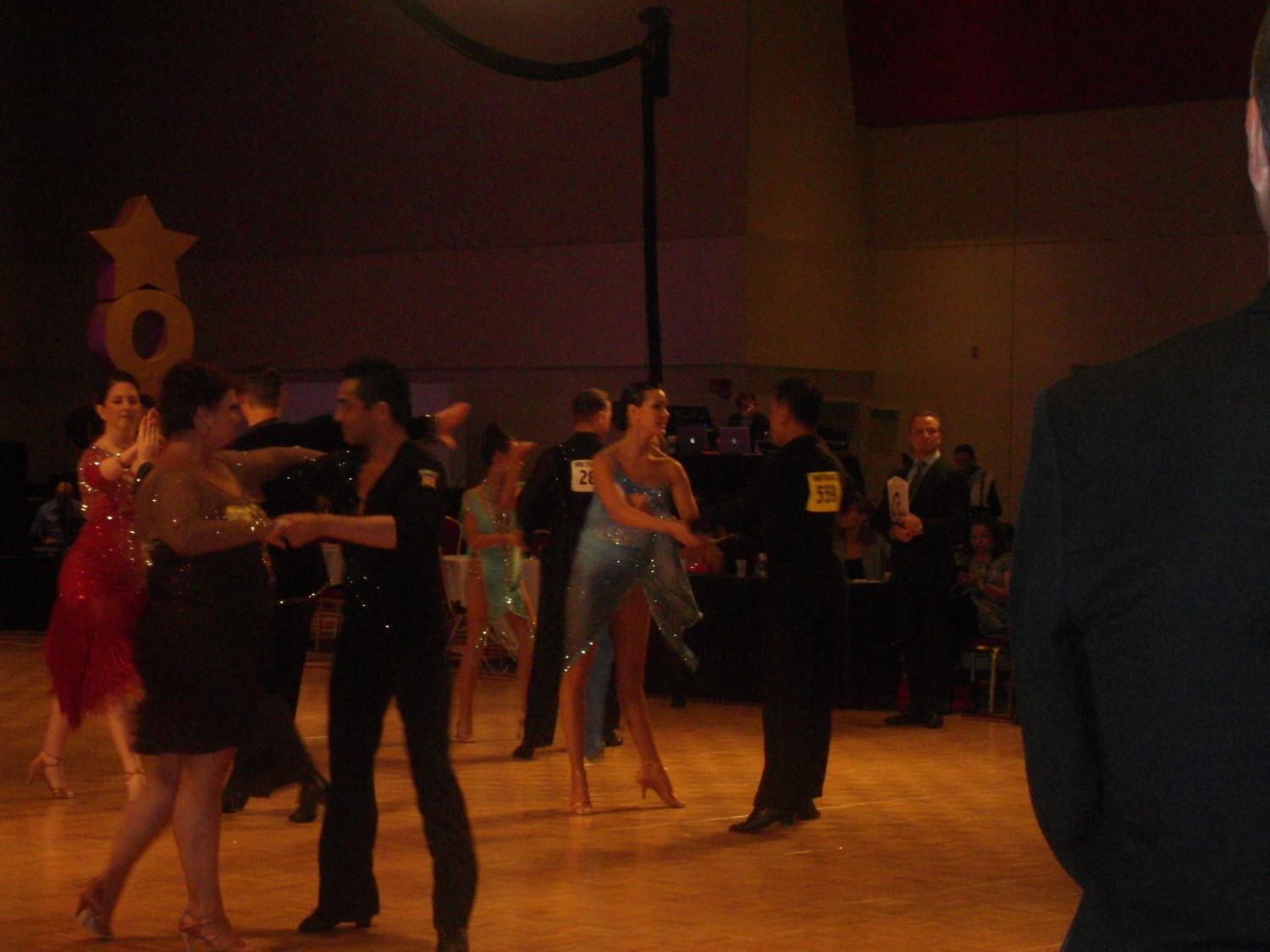7 Ways to Avoid a Dance Floor Collision

Knocked knees, crushed toes, and the occasional bump from a neighbour are inevitable as we get our dance legs under us and learn to navigate the highway of social dancing. The following pro tips will help you spend less time wincing over bruises, and more time smiling at a dance well done.
1. Keep it moving
Particularly in progressive dances – that is, when the dance travels around the floor, like a race track – it’s important not to be a speeder or a sluggard. Keep an eye on the couple ahead, and plan your moves with the space that’s available. Don’t try a long step hoping they’ll get out of your way – you never know when they might need to put the brakes on.
2. Flowing with traffic
No matter which ‘lane’ of traffic you’re in, it’s usually moving at a fairly consistent speed you should try to match. Likewise, in slot dances, like hustle or west coast swing, dance parallel to other people’s slots. The only time you should move from your position in your lane or slot is if you see a clear opening – and you know you’re good enough to pull it off.
3. Keep an air cushion
Especially for newcomers, a 1 metre cushion between your partner and any other object in the room is advised. Sometimes we or others misjudge our distance between us. Sometimes the partner in front stops faster then expected. The buffer gives you safe stopping time, so you don’t elbow your fellow dancer in the face.
4. Avoid the centre lane… Unless you are a beginner
In progressive dances, the centre is like the median strip of a highway – nobody expects a car to cross over to the other side, or there would be a lot more accidents. Don’t be the ‘drunken dancer’, staggering across the floor into oncoming traffic. The centre is reserved for beginner dancers to practice their steps without interference.
5. The emergency break
No matter the dance, make sure you always have a plan if you have to stop suddenly. In most cases, a stationary dance step allows you to avoid a crash, and still look classy. For example, a foxtroter might use a sway step, a tanguero can corte, and the waltz dancer has the option of a balance step.
6. The driver is the protector
If a collision is inevitable, the onus is usually on the leader to ‘take one for the team’. That means shielding your partner with your own body if necessary. Even if it was completely your fault, your efforts to keep her safe are worth a lot more to her then your occasional missteps.
7. Apologize, no matter what
Regardless of who’s fault it is (and it’s almost never only one person’s fault), be sure to apologize and ask both the other couple and your partner if they’re all right. After all, if no one feels safe on the dance floor, who’s having fun?
Credits:
Ballroom Joe
Dancing for Dessert
Heritage Institute
About the Author
Ian Crewe has been dancing ballroom for almost 20 years, and has a Licentiate in American smooth and rhythm. His passion for dance and his endless seeking for ways to reach new audiences eventually led him to blogging and the World Wide Web. Ian currently teaches ballroom at the Joy of Dance Centre, Toronto, ON, Canada.

